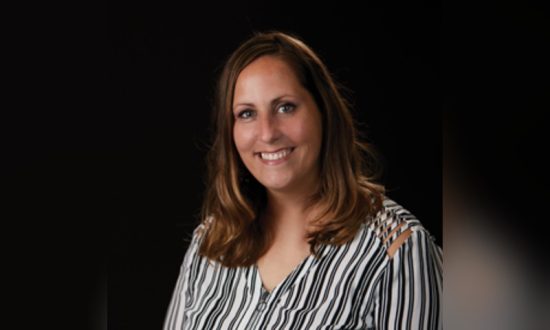A former PK-8 math teacher turned technology integration specialist, Jaime Donally has spent more than a decade at the classroom and district levels thinking about how educators can practically use augmented, virtual, and mixed realities. In her current role as an independent education consultant, she provides professional development on immersive technology to districts and conferences. She also connects on social media using #ARVRinEDU about AR and VR in education. Donally is the author of Learning Transported and The Immersive Classroom, which aims to tackle the fears and hurdles of immersive learning integration and get teachers on board with successful implementation.
In today’s digital age, the ability to create 3D content is becoming increasingly important. From shopping to social media, our students interact with 3D content daily. As we move towards the future of the metaverse, the necessity of creating 3D content is increasingly clear. Digital environments will be built on 3D content, and without it, the metaverse would be little more than a 2D representation of reality. As we continue to explore the potential of the metaverse, it is clear that creating 3D content creators is an essential skill for our students to build rich and engaging virtual worlds.
While developing 3D content has always been an advanced skill, some recent technologies have simplified the task. LiDAR, photogrammetry, and NeRF are three technologies that have revolutionized the creation of 3D content. These technologies allow us to capture the real world and replicate those objects into 3D models that can be used in various applications.
What is Mobile 3D Scanning Technology?
LiDAR, or Light Detection and Ranging, is a technology that uses laser pulses to measure distances and create 3D maps of physical spaces or objects. Photogrammetry is a technique that uses specialized software to create a 3D model of an object or scene by using multiple 2D photographs taken from different angles. It involves identifying common features in the images and determining their 3D location using triangulation techniques. NeRF, or Neural Radiance Fields, is a newer technology that uses machine learning algorithms to create 3D models from 2D images. Instead of finding similarities between the pictures, as photogrammetry does, it learns how to map specific 3D points to their corresponding colors. This makes it easier to create accurate 3D models of objects or scenes with complex shapes or lighting.
Traditionally, creating 3D content has been time-consuming and expensive, requiring trained artists and technicians. The simplicity of using mobile applications to create stunning 3D objects might seem complicated, but these tools are incredibly user-friendly. The best part about these technologies is that they can be used with many common devices, such as smartphones or tablets. This means that anyone can become a 3D content creator with basic knowledge and practice.
How is Technology Effective in the Classroom?
Producing 3D content has many applications, from virtual reality landscapes to architecture and home design to displaying products in augmented reality. Specifically in the classroom, teachers can create engaging visual aids that facilitate hands-on learning experiences. For example, 3D models of historical landmarks and terrain can be scanned and digitally replicated to give students a better understanding of geography, history, and culture.
Beyond viewing content, students can easily become 3D content creators. This technology allows students to capture and create 3D models of plants and animals, demonstrating their perspective on nature. Imagine converting a museum visit into a full-scale, lifelike augmented reality experience. Whether the technology is used to create 3D models of historical artifacts or biological specimens, it can revolutionize how we teach and learn.
Not only can students creatively express their ideas, but in some instances, learning how to create 3D content can be a valuable skill for a potential future career. Becoming a 3D content creator is essential for students because it is a talent increasingly in demand in various industries such as film, gaming, architecture, and product design. By equipping our students with the skills to create their own 3D content, we are preparing them for a future where the digital and physical worlds are increasingly intertwined.
Examples
Polycam is a powerful tool that can produce high-quality 3D content using both photogrammetry and LiDAR technology. The mobile application uses advanced algorithms with photogrammetry to stitch together multiple photographs of an object, creating a detailed and accurate 3D model. The LiDAR technology is available on the latest iPhones and iPads to create detailed 3D maps of objects and environments. The Polyweb (web-based library of Polycam published content) is especially helpful for accessing your 3D files and sharing them with others.
Luma AI leverages NeRF technology to capture high-quality 3D objects using your mobile device, making it an ideal solution for exporting to augmented or virtual reality. Unlike LiDAR technology, reflections and lighting aren’t an issue with NeRF and Luma AI’s compatibility with iOS and Android devices (coming soon) means wider accessibility. Luma AI also has a web feature to upload videos or photos and convert them into 3D objects.
Being a 3D content creator using LiDAR, photogrammetry, or NeRF technology is an important skill in today’s digital world. These technologies allow us to create virtual models of the real world that can be used in various applications. By equipping our students with the skills to create their own 3D content, we are preparing them for a future where the digital and physical worlds are increasingly intertwined.




